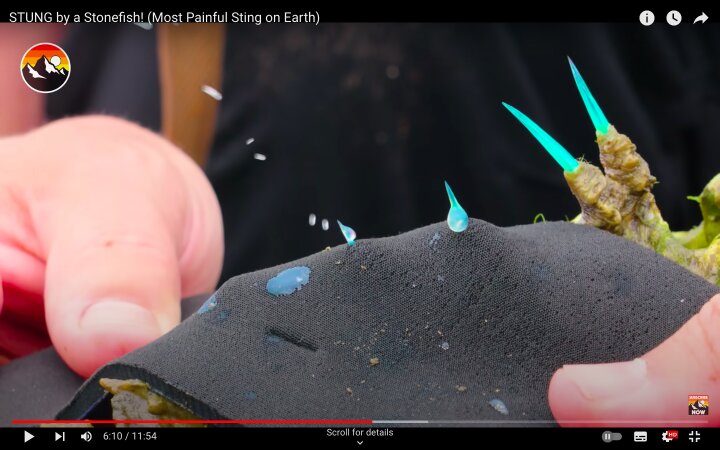This page is a permanent link to the reply below and its nested replies. See all post replies »
What the… you don’t eat that, do you?
MartinTheFirst · 26-30, M
@submissivelittlewoman Haha no, you appreciate it's dangerous beauty
@MartinTheFirst good, because I couldn’t eat anything that looked at me like that
MartinTheFirst · 26-30, M
@submissivelittlewoman What do you think about the spines? aren't they just other-worldly?
MartinTheFirst · 26-30, M
@submissivelittlewoman im such a nut for nature
I apologize for the incorrect information in my previous response. While the venom of most stonefish species is typically colorless, there are certain species of stonefish, such as the reef stonefish (Synanceia verrucosa), that can have a bluish tint to their venom.
The blue coloration of the venom is due to the presence of pigments called biliverdin and bilirubin. These pigments are byproducts of red blood cell breakdown and can give a blue-green coloration to certain tissues or secretions. In the case of the reef stonefish, the venom glands contain these pigments, resulting in a blue hue.
It's important to note that the color of the venom can vary among stonefish species, and not all stonefish have blue venom. There are approximately 14 recognized species of stonefish, and their venom can range in color from colorless to yellowish to bluish, depending on the species. The coloration is a result of the specific composition of toxins and pigments within the venom glands of each species.
The blue coloration of the venom is due to the presence of pigments called biliverdin and bilirubin. These pigments are byproducts of red blood cell breakdown and can give a blue-green coloration to certain tissues or secretions. In the case of the reef stonefish, the venom glands contain these pigments, resulting in a blue hue.
It's important to note that the color of the venom can vary among stonefish species, and not all stonefish have blue venom. There are approximately 14 recognized species of stonefish, and their venom can range in color from colorless to yellowish to bluish, depending on the species. The coloration is a result of the specific composition of toxins and pigments within the venom glands of each species.
@MartinTheFirst ok… maybe I’m not crazy about the colour.
MartinTheFirst · 26-30, M
@submissivelittlewoman but you said you loved it... 😅 sigh
@MartinTheFirst I was wrong
MartinTheFirst · 26-30, M
@submissivelittlewoman you lied, there's a difference lol... a white lie but still, it's better to be honest ☺️ I'm glad you fessed up at least
@MartinTheFirst it wasn’t a lie… I was not given all the correct information!
MartinTheFirst · 26-30, M
@submissivelittlewoman wtf 🤣







